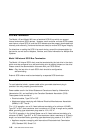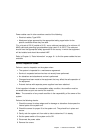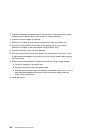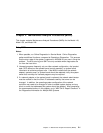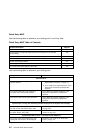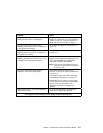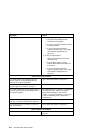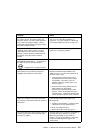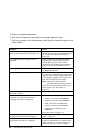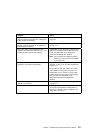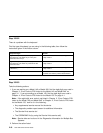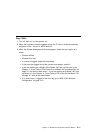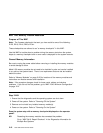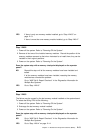
Symptom Action
The SMS configuration list or Boot sequence
selection menu shows more SCSI devices
attached to a controller/adapter than are actually
attached.
A device may be set to use the same SCSI bus
ID as the control adapter. Note the ID being
used by the controller/adapter (this can be
checked and/or changed via an SMS utility), and
verify that no device attached to the controller is
set to use that ID. If settings do not appear to
be in conflict, go to “Boot Problems/Concerns”
on page 4-27.
The System Management Services menu is
displayed.
The device or media you are attempting to boot
from may be faulty.
1. Check the SMS error log for any errors. To
check the error log:
a. Choose error log
b. If an error is logged, check the time
stamp.
c. If the error was logged during the
current boot attempt, record it.
d. Look up the error in Chapter 6 "Error
Code to FRU Index" and do the listed
action.
e. If no recent error is logged in the error
log, continue to the next step below.
2. Try to boot from an alternate boot device
connected to the same controller as the
original boot device. If the boot succeeds,
replace the original boot device (for
removable media devices try the media
first).
3. Go to “MAP 1540: Minimum Configuration”
on page 2-21.
You cannot load diagnostics. Go to “MAP 1020: Problem Determination” on
page 2-7.
You have a problem that does not prevent the
system from booting.
Go to the Fast Path MAP in the
Diagnostics
Information for Multiple Bus Systems
.
You do not have a symptom. Go to MAP 0020 in the
Diagnostics Information
for Multiple Bus Systems
You have an SRN. Go to the Fast Path MAP in the
Diagnostics
Information for Multiple Bus Systems
.
You suspect a cable problem. Go to the
Adapters, Devices, and Cable
Information for Multiple Bus Systems
.
You Cannot Find the Symptom in this Table
All other problems. Go to “MAP 1020: Problem Determination” on
page 2-7.
2-6 7043 43P Series Service Guide



